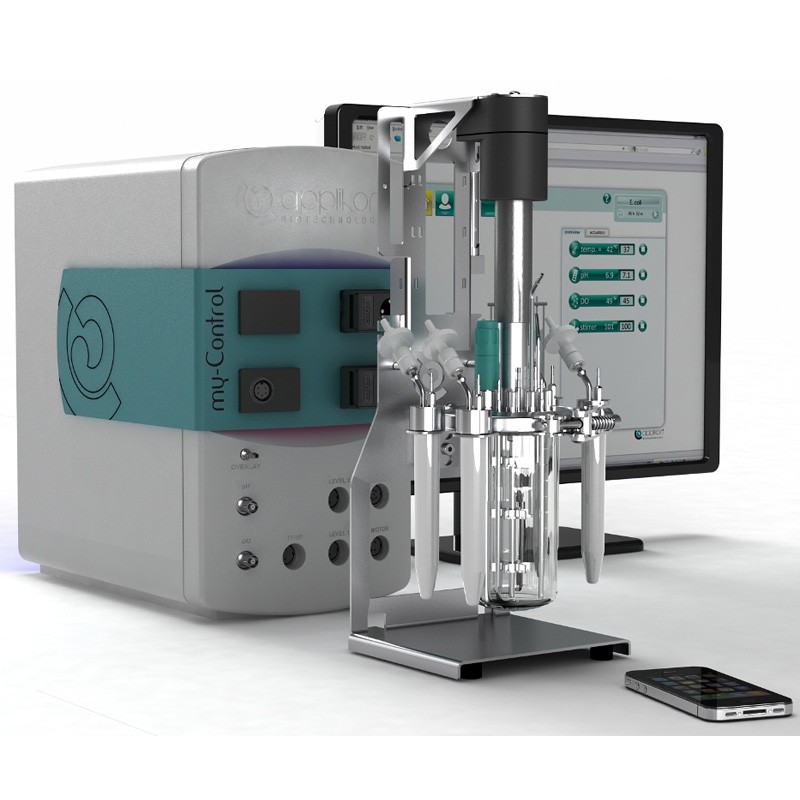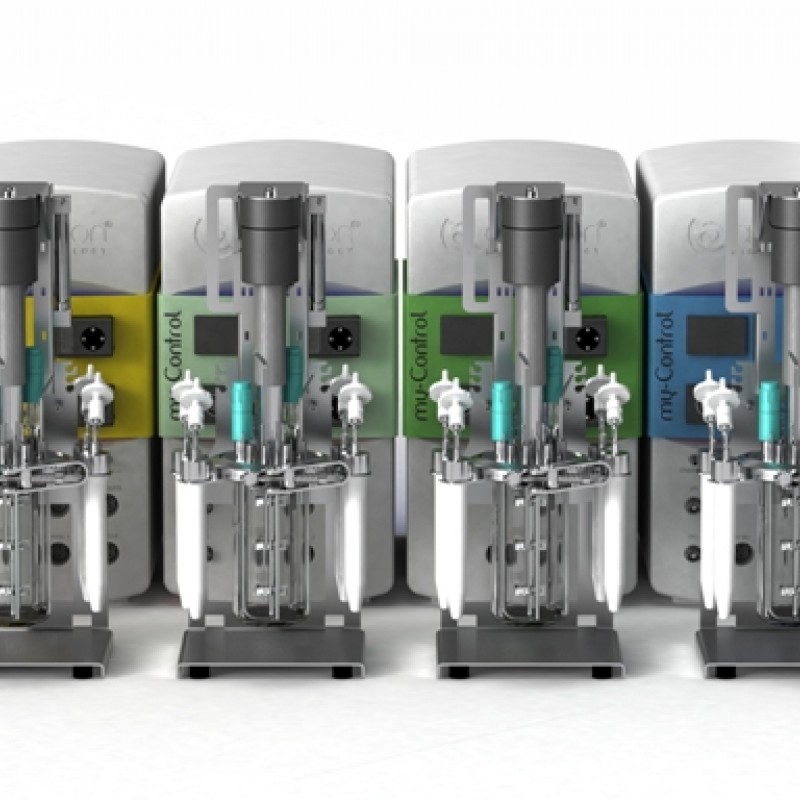

The MiniBio range of bioreactors (250 ml, 500 ml and 1000 ml total volume) is a true scale down of the laboratory scale bioreactors in the 1 to 20 liter range. The MiniBio systems have the same flexibility as the laboratory scale bioreactors. This means that the MiniBio systems can be customized to fit the demands of any process. The small volume reduces medium costs and reduces the use of expensive bench space.
Unique features of small scale bioreactors:
Applications:
Configurations for microbial and cell culture bundles
The microbial MiniBio bundle is configured as follows
The cell MiniBio bundle is configured as follows
|
|
MiniBio 250 |
MiniBio 500 |
MiniBio 1000 |
|
Total volume (ml) |
250 |
500 |
1000 |
|
Working volume (ml) |
200 |
400 |
800 |
|
Minimum working volume (ml) |
50 |
100 |
200 |
|
Aspect ratio total volume |
2.5 |
2.5 |
2.5 |
|
Aspect ratio working volume |
2 |
2 |
2 |
|
Dimensions (dxh, mm) |
180 x 400 |
195 x 400 |
200 x 550 |
|
Dimensions for autoclaving (dxh, mm) |
180 x 250 |
195 x 250 |
200 x 400 |
|
Drive system |
Direct drive, lipsealed |
Direct drive, lipsealed |
Direct drive, lipsealed |
|
Maximum stirrerspeed (rpm) |
50 – 2000 |
50 - 1750 |
50 - 1500 |
|
Maximum impeller tipspeed (m/s) |
2.3 |
2.0 |
3.5 |
|
Impellers |
Choice of Rushton and marine |
||
|
Gas sparger |
Porous sparger or L-type sparger |
||
|
Gas overlay |
Yes |
||
|
Exhaust gas |
Electrically cooled exhaust gas condenser |
||
|
Sampling |
Fixed sample pipe with optional sampling system |
||
|
Draining |
Height adjustable drain pipe |
||
|
Additions |
4 fixed inlet ports and optional micro liquid injectors |
||
|
pH |
Measurement: 8 mm classic pH sensor |
||
|
DO2 |
Measurement: 8 mm classic polarographic DO2 sensor |
||
|
Temperature |
Measurement: Pt-100 sensor in thermowell in topplate |
||
|
Foam |
Measurement: Height adjustable conductivity based foam sensor |
||
|
Level |
Measurement: Height adjustable conductivity based level sensor |
||
|
Optional inlets |
Septum, chemostat tube, liquid entry system |
||
Key features